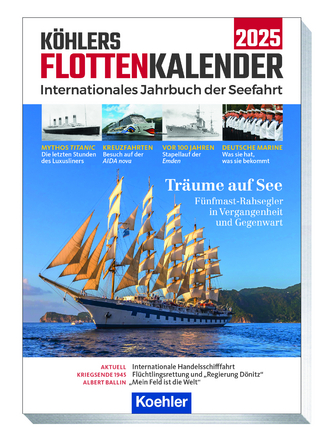
Mersey Shipping Since 2000
Seiten
2025
Amberley Publishing (Verlag)
978-1-3981-2331-1 (ISBN)
Amberley Publishing (Verlag)
978-1-3981-2331-1 (ISBN)
- Noch nicht erschienen (ca. Oktober 2025)
- Portofrei ab CHF 40
- Auch auf Rechnung
- Artikel merken
This book describes how the local changes to shipping since 2000 that have affected the River Mersey.
The Mersey Docks & Harbour Board was created in 1858, becoming a limited company in 1972. There followed a programme of investment in the facilities to be completed and the building of a new dock and terminals at Seaforth, Liverpool and Birkenhead. The carriage of goods in containers changed the way cargo was carried and the type and design of ships using ports around the world. By 2000 new facilities were being developed for the grain and timber trades. The scrap-metal trade took over many of the old berths and a new steel terminal was opened. The year 2000 was a time of transition for the port and the type of ships required to carry cargo and passengers. Roll-on/roll-off cargo to Ireland rose by a third in 2000, a new river terminal was built and new ferries were introduced. Specialist ships are employed on the new business and a cruise terminal was opened in 2008, which can accommodate the largest vessels to enter the Mersey. The River Mersey now welcomes every type of ship trading around the world, including dry-cargo, bulkers, oil tankers, tugs, coastal vessels, cruise ships and vessels arriving at Cammell Laird for annual overhaul, repair or conversion. This book describes the decline in areas of trade with the consequent loss of traditional ships and the development of new business and ships specially designed and equipped to deal with the changing pattern of trade across the world.
The Mersey Docks & Harbour Board was created in 1858, becoming a limited company in 1972. There followed a programme of investment in the facilities to be completed and the building of a new dock and terminals at Seaforth, Liverpool and Birkenhead. The carriage of goods in containers changed the way cargo was carried and the type and design of ships using ports around the world. By 2000 new facilities were being developed for the grain and timber trades. The scrap-metal trade took over many of the old berths and a new steel terminal was opened. The year 2000 was a time of transition for the port and the type of ships required to carry cargo and passengers. Roll-on/roll-off cargo to Ireland rose by a third in 2000, a new river terminal was built and new ferries were introduced. Specialist ships are employed on the new business and a cruise terminal was opened in 2008, which can accommodate the largest vessels to enter the Mersey. The River Mersey now welcomes every type of ship trading around the world, including dry-cargo, bulkers, oil tankers, tugs, coastal vessels, cruise ships and vessels arriving at Cammell Laird for annual overhaul, repair or conversion. This book describes the decline in areas of trade with the consequent loss of traditional ships and the development of new business and ships specially designed and equipped to deal with the changing pattern of trade across the world.
Ian Collard a well-known local author and has written many books on ocean liners and cargo ships, particularly those sailing out of Liverpool itself. Acknowledged as one of the local experts, he has even appeared on radio to tell of his times as an author. He lives in the Wirral, within sight and sound of the Mersey.
| Erscheint lt. Verlag | 15.10.2025 |
|---|---|
| Zusatzinfo | 160 Illustrations |
| Verlagsort | Chalford |
| Sprache | englisch |
| Maße | 165 x 234 mm |
| Themenwelt | Sachbuch/Ratgeber ► Geschichte / Politik ► Regional- / Landesgeschichte |
| Natur / Technik ► Fahrzeuge / Flugzeuge / Schiffe ► Schiffe | |
| ISBN-10 | 1-3981-2331-5 / 1398123315 |
| ISBN-13 | 978-1-3981-2331-1 / 9781398123311 |
| Zustand | Neuware |
| Haben Sie eine Frage zum Produkt? |
Mehr entdecken
aus dem Bereich
aus dem Bereich
internationales Jahrbuch der Seefahrt
Buch | Softcover (2024)
Koehler in Maximilian Verlag GmbH & Co. KG
CHF 35,90


